2022-11-23
大英博物馆里有几把黄釉或绿釉的执壶或军持,做工比较粗糙,个别只施半釉,横跨唐元宋明几代。在博物馆的文字介绍中,说这些执壶的产地,是中国福建,出口东南亚各国。
1、元代的执壶叁把
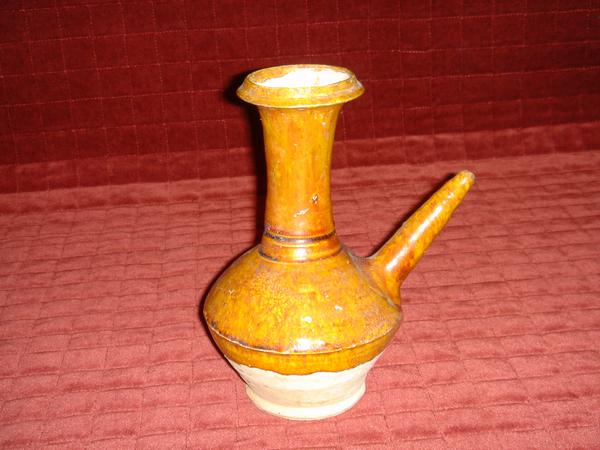
Stoneware kendi with caramel-colored iron glaze. Diameter: Diameter: 5 cm; Height: Height: 17.50 cm
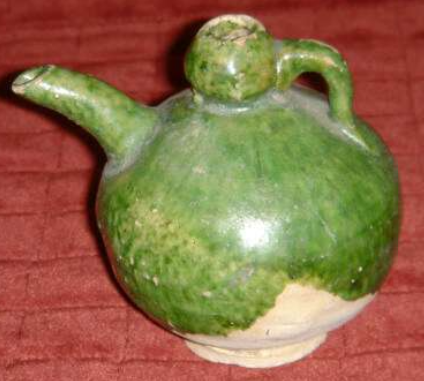
Stoneware ewer with green glaze. Diameter: 5 cm; Height: Height: 7.80 cm
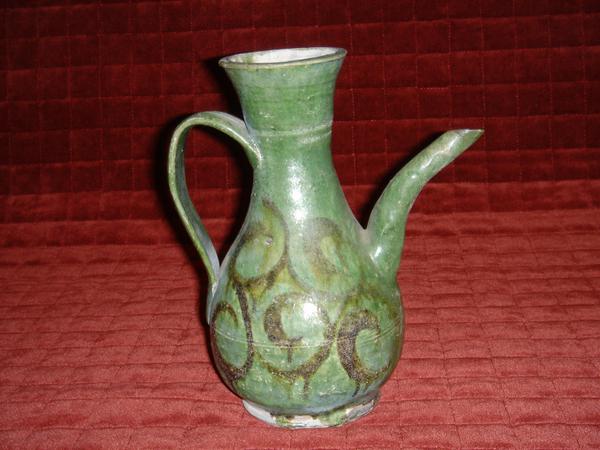
Stoneware ewer with underglaze iron-brown painting and green glaze. Diameter: 5 cm; Height: Height: 19.30 cm
在泉州海外交通史博物馆里,收藏有类似的一枚:(A similar example is in the Quanzhou Maritime Museum, Quanzhou, Fujian province).说的可能就是下面这一枚磁灶窑绿釉双龙抢珠纹军持了:
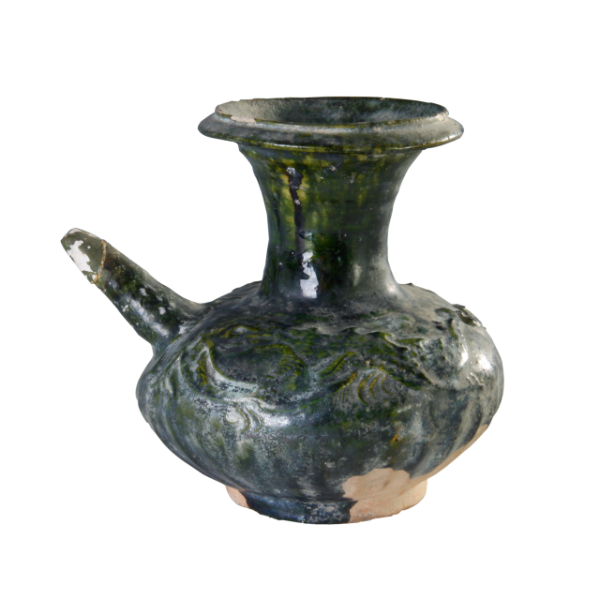
2、明代的执壶一把。原因如下:
This type of ewer was probably used in a domestic Chinese context for pouring wine and was also sold to customers in South-east Asia where animal-shaped ewers had been popular for some time. Ming ceramics were preserved in Indonesia over the centuries and as late as the end of the Second World War, in 1945, almost identical crayfish ewers were used as ritual objects among the Kelabits and Muruts people of the far uplands in the interior of northern Sarawak, and Kalimantan in Borneo, Indonesia. Such ewers were used there for borak (rice wine) in ceremonies associated with crop fertility and head-hunting. Some of these ewers were later purchased for the Sarawak Museum. Another similar example is in the Hainhofer Cabinet at Upsala, Sweden, which formed part of a collection completed in ad 1628.
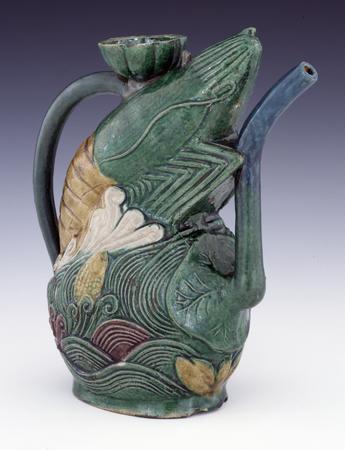
There is another ewer in the Dresden Collection which 'can be traced in Saxon hands as far back as the sixteenth century. The presence of similar examples in such early inventoried European collections provides us with a terminus post quem. Since R. L. Hobson's time further research has established that ewers in the form of phoenix or carp were inventoried for the Elector of Saxony in 1590, recorded as a gift in 1579-80 from the Medici Grand Duke of Florence.
An identical example is in the Baur Collection, Geneva, and a further example is in the Lee Kong Chian Art Museum, National University of Singapore. Variations on this type of ewer, with carp in place of the crayfish, are also known, while complete examples of both carp and crayfish ewers are in a private collection in Morotai, Halmahera, Indonesia.
3、唐或辽代(618-1125)的一把:
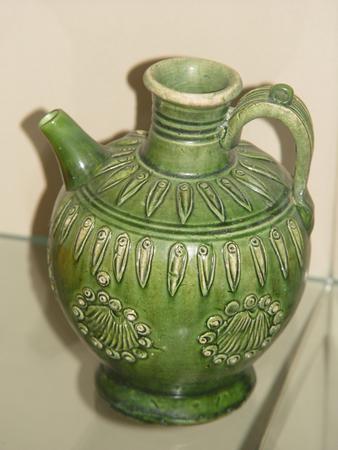
Ewer. Made of green glazed and applied earthenware.
查网上资料,知道位于福建泉州的磁灶窑,始于南朝,窑火延续了一千五百多年,出产执壶和军持,在宋元时期达到鼎盛,其中磁灶窑系的低温绿釉器最具鲜明的地方特色,是福建诸多窑口中唯一生产绿釉器的窑口,以绿釉器独步天下。虽然这些窑口的发现,都是经历了墙外开花在先,再经南海一号等沉船的发现,再到窑址的挖掘。
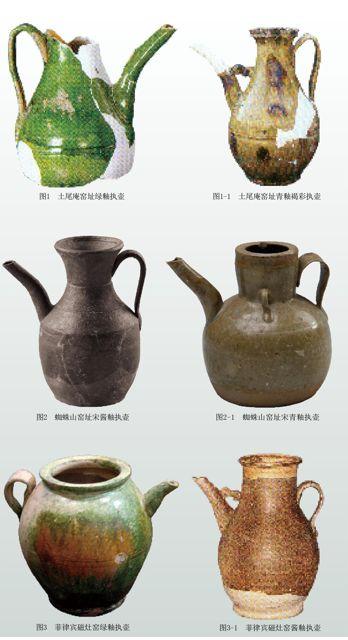
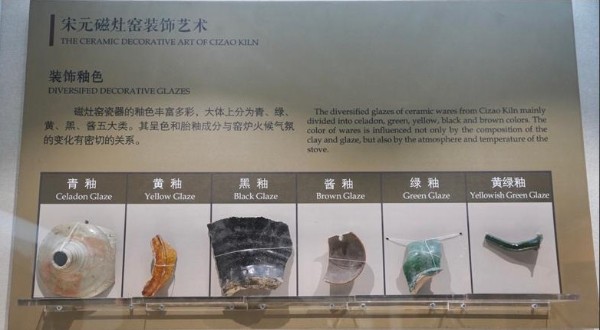
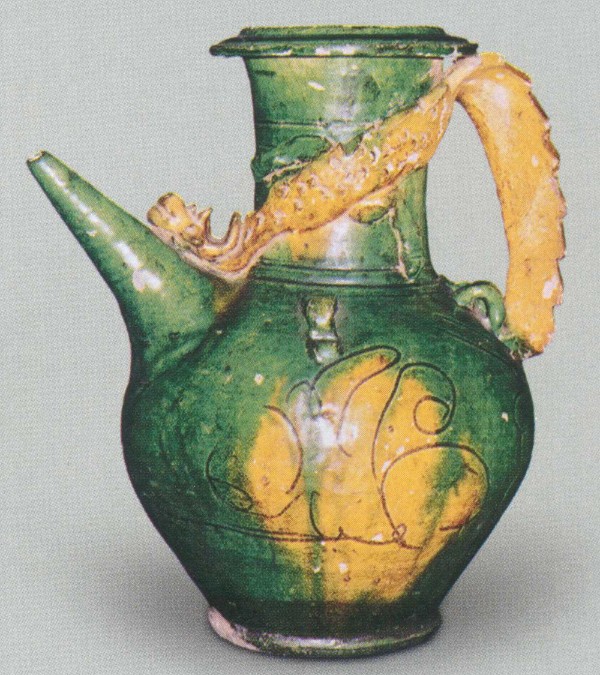
在菲律宾发现的绿釉军持(载于《磁灶窑址:福建晋江磁灶窑址考古调查发掘报告》)
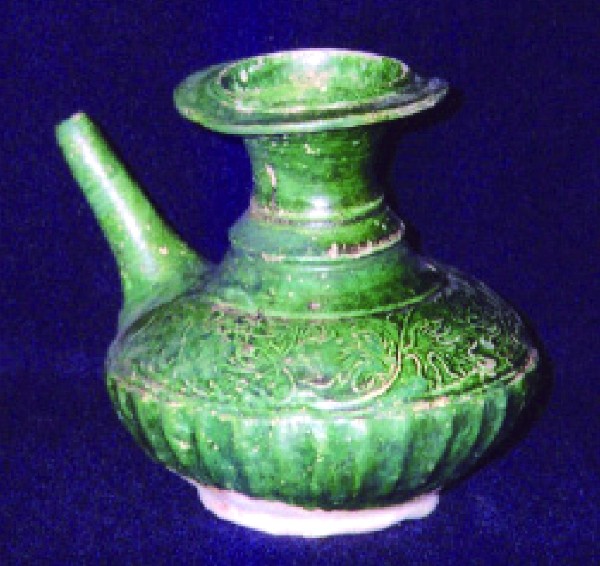
宋绿釉印花军持(菲律宾发现)
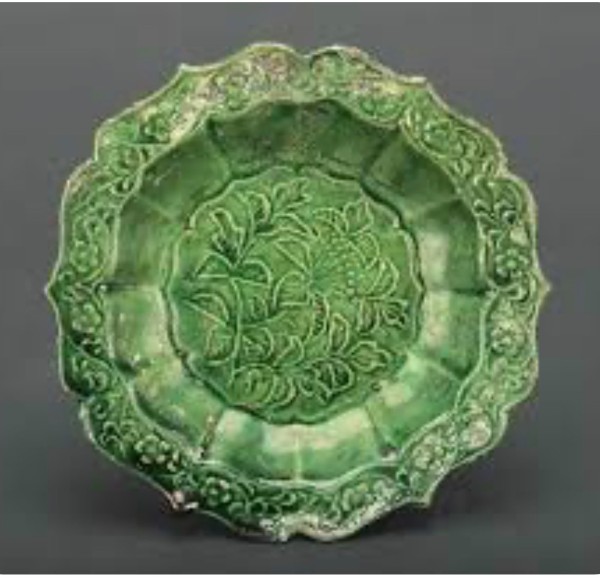
南海一号沉船上发现的福建磁灶窑绿釉印花卉纹折沿菱口碟
需要特别说明的是,就化学元素组成而言,我国历代低温色釉都属于氧化铅-氧化硅二元系统釉色,是以氧化铅作为助熔剂,在1000度以下烧成的颜色釉陶瓷,亦称铅釉系列。也就是说,低温绿釉以氧化铜为着色剂,铅化合物作为助熔剂。此类釉料中含有很高的氧化铅成分,占比约为40%或更高。作为一种助熔剂,氧化铅能够大大降低釉料的熔融温度,故而被称作低温釉。唐叁彩、辽叁彩上的绿彩就是这种低温釉的产物。由于低温铜绿铅釉中含有大量的铅元素,从而使釉料带有了很强的毒性,因此古代陶瓷工匠们很少以此类釉料制作实用的食器或炊器,而多是以它去制作陪葬的冥器、祭器以及建筑材料等。福建的磁灶窑,属于低温陶器,没有例外。
这种低温铅釉,最早产生于西汉中期的陶俑,发展到唐叁彩、辽叁彩和素叁彩,陶器低温彩釉达到了至尊至善的高度。叁彩釉是由坩土、石英、草木灰和铅的氧化物配成的一种透明釉。这种铅料,不加呈色剂就是白釉,羼入适量的氧化铜就烧成绿色,羼入氧化铁就出现褐色、黄色,如果羼入氧化钴就呈现蓝色,这是叁彩釉的基本色调。在此基础上发挥工匠高度的智慧和技巧就配出了白色、浅黄、赭黄、褐红、翠绿、深绿、天蓝、藏蓝、茄紫等色彩。一彩、二彩,或彩色缤纷的多彩,几乎做到了随心所欲不逾矩的地步。铅釉陶器作为冥器,在长期的土壤与尸骨的还原环境中会产生白铅矿、碳酸铅和磷酸铅钙的析出(见《我国古代不同时期铅釉陶表面腐蚀物的分析研究》),其中氧化铅的含量刻高达80%,就是所谓的银釉,也是鉴定此类古陶器的一种方法。
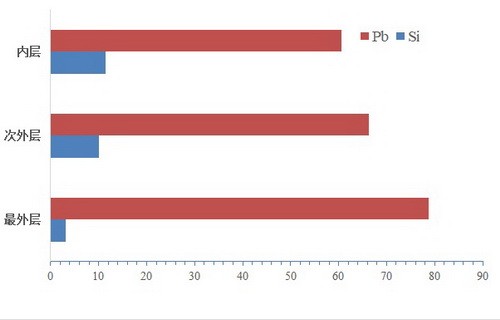
明代尤其是入清之后,景德镇发展出来的釉上彩瓷器中的绿色,其化学组成包括二氧化硅、氧化铅、氧化铜、氧化铁、碱金属。大概的化学成分和比例,如下表所示。

釉上彩自然老化后,容易产生薄膜干涉形成蛤蜊光,也是釉上彩瓷器的鉴定依据。而且同红彩和白釉相比,清代景德镇釉上彩中的绿彩,其氧化铅的含量也超高(《清代红绿彩瓷器无损分析研究》,光谱学与光谱分析, 2022, 42(3): 732, 网络出版: 2022-04-19)。
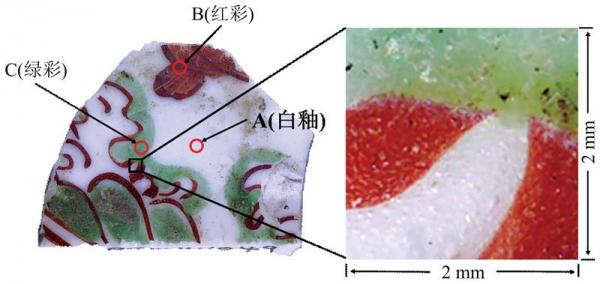
表 2. 白釉、红彩和绿彩的化学成分(质量分数, %)Table 2. Chemical compositions of white glaze and colored pigments (mass fraction, %)
| Al2O3 | SiO2 | P2O5 | S | K2O | CaO | TiO2 | MnO | Fe | Cu | PbO |
|---|
| A(白釉) | 12.43 | 73.73 | - | - | 5.96 | 6.26 | - | 0.11 | 0.63 | - | - | | B(红彩) | 9.70 | 60.71 | 0.48 | 0.02 | 9.30 | 10.29 | 0.04 | 0.27 | 1.63 | - | 6.29 | | C(绿彩) | 0.33 | 45.61 | 0.04 | - | 5.78 | 3.92 | - | 0.57 | 0.67 | 0.02 | 41.49 |
|
所以在上一篇博文中我就说,青花瓷纪年铭文在入清之后,就被康熙皇帝给带歪了,尤其是被雍正和乾隆这爷儿俩给玩残了,不是没有凭据的。因为在各种低温颜色釉中,都或多或少,含有氧化铅,不仅仅是绿色(见故宫学院《古代建筑琉璃构件价值揭示与科技保护研究》一文)。

与铅为伍,无铅不欢,当年的罗马帝国,就是这麽着玩铅自毁的。
|
